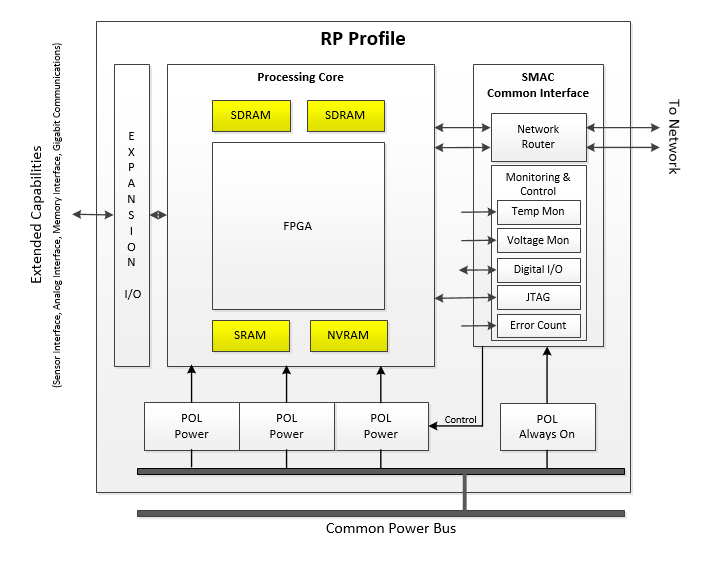Reconfigurable Processing Profile
Memory Technologies

RP Node Memory Technologies
External memory is often included on RP node instantiations to support the FPGA’s processing. Among other uses, memory provides storage for sensor data and working space to implement processing algorithms. Any combination of memory technologies, including Synchronous Dynamic Random Access Memory (SDRAM), Static Random Access Memory (SRAM), and Non-Volatile flash-based Memory (NV) may be used.
SDRAMs are very fast, high-capacity memories and are appropriate for high-bandwidth applications. They are very dense with capacities ranging from hundreds of megabits to gigabits. While their use is appropriate for applications that need both speed and density, they require complex controller logic and are sensitive to a variety of Single-Event Effects (SEE). SDRAM is also a volatile storage technology and will lose the contents of memory when power is turned off.
SRAMs are also fast memories but have significantly less memory capacity than SDRAM. However, SRAMs usually have simple interfaces that do not require complex controller logic. Similar to SDRAM, SRAM is also volatile and sensitive to Single Event Effects (SEE). Radiation-hardened versions of SRAM are available that are resistant to SEE, but often do so at the expense of lower storage capacity and higher cost.
NV memories are non-volatile memories and are useful for retaining data after power is turned off, either to store configuration files, software, or data (as a solid-state recorder). NV varies widely in capacity, controller logic complexity, SEE sensitivity, and speed depending on the NV technology. Newer NV technologies are radiation-hardened and can read and write at SRAM speeds, but have less capacity. Note that all NV technologies have a limited number of write operations that can occur into each memory cell before the cells will fail.
In summary, each memory technology has distinct characteristics that should be carefully considered against the overall system tasks and requirements in order to select the proper memories for the intended application.